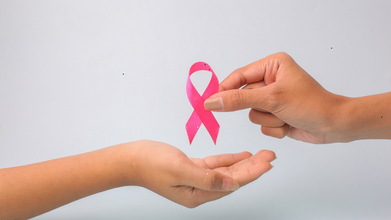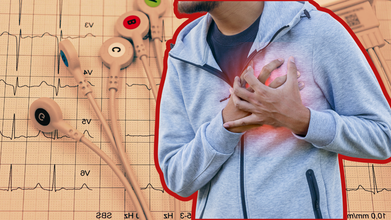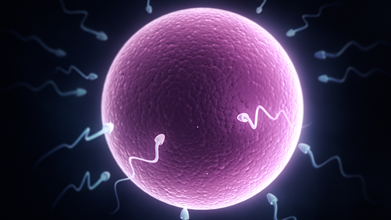- Health Conditions A-Z
- Health & Wellness
- Nutrition
- Fitness
- Health News
- Ayurveda
- Videos
- Medicine A-Z
- Parenting
- Web Stories
Why More U.S. Women Are Being Denied Breast Cancer Therapy

Credits: Canva
In the South of USA, the rural areas to be specific, hospitals are few, and are far between. This is where breast cancer patients often have to travel for hours, sometimes even hundreds of miles to seek care, reports CNBC. For many of these patients, a newer treatment called intraoperative radiation therapy (IORT) could be life-changing. However, across the US, access to this convenient, which is cost-effective, is now shrinking.
Dr Phillip Ley, reports CNBC, who is a cancer surgeon in Jackson, Mississippi, treats patients who struggle to afford daily travel for weeks of radiation therapy. “I have patients that don’t have enough gas money to go to radiation every day,” he said.
For women who qualify, Dr Ley recommends them IORT, a technique that delivers a single, targeted dose of radiation to breast tissue immediately after a tumor is removed. This happens in the operating room, and spares the patients the need for multiple hospital visits, thus a cheaper alternative.
However, despite the advantages, IORT is disappearing from the US.
Why Is IORT Losing Its Ground In US?
CNBC reported that financial interests could be the reason behind IORT's decline.
As per the Medicare data 2022, radiation oncologists who perform IORT earn $525 per treatment, which is far less than the $1,300 for a five-session course of radiation or $1,730 for 15 sessions. Each additional hospital visit also generates facility fees, which makes the conventional radiation therapy far more profitable.
Dr Let says, "This is about money and greed." In fact a 2018 Frontiers in Oncology study estimated that IORT could save $1.2 billion over five years in U.S. healthcare costs.
Who Is Eligible vs Who Is Not For IORT?
This FDA-approved treatment was first cleared in 1999, however, it is not suitable for everyone. It is best for postmenopausal women, with small, early-stage tumors and no lymph node involvement.
However, research does show that IORT may carry a slightly higher recurrence rate than radiation therapy. Roughly 1 in 5 patients could require a full radiation therapy afterward if additional cancer cells are revealed in pathology results.
Despite this, studies show a similar long-term survival rates, lower mortality from other cancer, a fewer complications like burns or radiation damage to the lungs and heart. Still, the American Society For Radiation Oncology (ASTRO) does not recommend IORT outside clinical trials, citing recurrence concerns.
Dr. Catheryn Yashar, ASTRO’s president-elect, insists the organization’s position is based purely on data, not dollars: “ASTRO’s job is to evaluate the data objectively and give both physicians and patients a framework for decision-making,” reports CNBC.
However, not all doctors agree. Dr Alice Police, a breast surgeon who helped launch three IORT programs in US hospitals says, "“Radiation oncologists are very powerful — they make so much money for hospitals. Even though the data is awesome and the benefit to the patient is enormous, they call it experimental.”
Another barrier is also insurance companies who often refuse to pay for IORT.
However, when patients are asked, they share stories where they returned to work way before than they would have in case of traditional radiation therapy.
Stories Of Relief, Stories Of Frustration
Amy Slaton, 59, from Louisiana shares such experience with CNBC. She says while she had to pay out of pocket, she was able to return to work within two months, far sooner than if she had undergone standard radiation.
Heidi Toplansky, 72, from California, who was diagnosed with cancer in both breasts in 2012, of which only one tumor qualified for IORT has become an advocate for this treatment. “With IORT, it’s 30 minutes with the device in the breast cavity,” she said. “With traditional radiation, you’re burning like a piece of meat on a barbecue grill."Traditional radiation left her with severe scarring, which she later treated with lasers. Still, she says she would choose IORT again in a heartbeat.
If You're Alone At Home And Experience A Heart Attack, Here's How You Survive: According To Doctor

(Credit-Canva)
Cardiovascular deaths are one of the leading causes of deaths all over the world. India witnessed the death if 2,873,266 in 2021, due to cardiovascular diseases according to the World Heart Federation.
These incidents can happen anywhere and to anyone. This means that the chances of you experiencing a cardiac event alone are also there. So, how does a person deal with it? Can you even realize that you are having a heart attack if you are alone? Is there even a chance you can make it out alive in that situation?
Not only can you recognize the signs of a cardiac event alone, but you can also increase your odds of living through it, if you make the right choices. Knowing this critical information can save your life, even if you do not think you will have an experience like this. In a recent post Dr Christabel Akinola, an Academic Family Physician from Canada, gave key aspects of how to survive a heart attack if you are alone.
She emphasized that if you're at home alone and feel like you're having a heart attack, you only have a few seconds or minutes to save your life. Knowing what to do immediately is crucial.
How To Improve Your Odds Of Surviving A Heart Attack
A man at his office one Monday suddenly started sweating and feeling dizzy. Then came the tell-tale sign: chest pain or tightness that moved to his left shoulder and jaw. Because his wife was a doctor, he immediately recognized these symptoms as a heart attack. He quickly took specific steps that saved his life:
- He called a colleague right away to tell them he was having a heart attack and needed help.
- He chewed a pill immediately.
- When his colleague arrived, they found him lying down with his legs raised on a table.
How To Survive A Heart Attack Before Medical Help Arrives?
Dr Akinola explained in the post that the pill he took was aspirin. Taking aspirin during a heart attack is extremely important because it can reduce your risk of death by 25%. Aspirin works by reducing the size of the clot causing the heart attack and improving blood flow. An important point to remember is: Chew the aspirin for faster absorption, it gets into your system more quickly through your mouth than if you swallow it whole.
This is an idea backed by one of the leading cardiologists in India, Dr Balbir Singh. In an exclusive interview with Healthandme, Dr Singh explained that if there is a history of cardiovascular diseases in your family, carrying an aspirin can be a lifesaver “Asprin, just a dissolvable disprin (a different form of aspirin that contains the same active ingredient acetylsalicylic acid) you can put it in a glass of water and drink. A 325 mg tablet that can save a life.”
Everyone should have low-dose aspirin at home and know how to use it. Make sure your family knows this, too, explained Dr Akinola in the post.
Elevating Your Legs: In the above-mentioned case the man learned that raising the legs helps improve blood flow back to the heart. While this is mainly a supportive action, it can help stabilize you until medical help arrives. Other steps you must take along with aspirin and elevated legs are,
Call Emergency Services
Call emergency services immediately. Put the phone on speakerphone so you can talk while doing the next steps.
Use the Coughing Technique (Temporary Help)
This technique can temporarily help keep blood moving until help arrives:
- Take a deep breath to fill your lungs with oxygen.
- Cough forcefully, as if you're trying to clear your lungs of something.
- Repeat this cycle every 2 seconds: deep breath and then a strong cough.
Stay Calm and Ready
Stay as calm and still as possible. Panic releases adrenaline, which makes your heart work harder and worsens the strain. Make sure you also unlock your door and keep your phone close by so rescuers can reach you easily.
Dr. Akinola reminds us that the three most life-saving actions are: Taking an aspirin, calling emergency services immediately, and coughing. Sharing this information could save a loved one’s life.
Turns Out, Women’s Eggs Don’t Age Like the Rest of the Body, Here's What The Study Says

Credits: Canva
Women's age do not face age-related mitochondrial mutation. A new study led by Kateryna Makova at Penn State University and Barbara Arbeithuber at Johannes Kepler University Linz suggests that human egg cells or oocytes, may be uniquely protected against certain age-related mutations. It also offered a new look into how women maintain their fertility in the later stage of their lives. Unlike the most body cells, which accumulate genetic changes over time, oocytes appear to keep their mitochondrial DNA stable, even when the women age.
The study is published in Science Advances and is titled 'Allele frequency selection and no age-related increase in human oocyte mitochondrial mutations'.
Mitochondria is known as the 'powerhouse' of the cell and are responsible for producing energy. Each mitochondria carries its own DNA, inherited by mothers. While most mitochondrial DNA (mtDNA) mutations are harmless, some can also impair energy production including muscle and nerve cell. Up until now, scientists have thought that mtDNA mutations would accumulate in eggs as women grow older, which also affects fertility and offspring health.
However, new research suggests otherwise.
How Was The Study Conducted?
The researchers collected 80 eggs from 22 women from age 20 to 42, alongside blood and saliva samples from the same participants. They then applied high-precision DNA sequencing to examine the prevalence of mitochondrial mutation.
The study found that while mtDNA mutations increased in blood and saliva with age, the same did not occur in oocytes. Human eggs showed 17-to-24 fold fewer mutations. However, even then, they were less likely to appear in regions of the mitochondrial genome which is responsible for the vital cellular functions .
“When we think about age-related mutations, we often assume that older cells carry more mutations than younger ones. But expectation is not necessarily the truth,” says Makova. “Human egg cells seem to be protected against some age-related mutations, which could help explain why women can reproduce later in life.”
Were Anything Like This Found Before?
These findings actually align with the earlier observation in macaques, where the researchers did find that mitochondrial mutations in eggs increased up to animals' reproductive prime and then plateaued. This hinted that evolutionary mechanism would safeguard reproductive cells. It appears that oocytes have evolved to lower their mutation burden, preserving energy production and genetic integrity,” says Makova.
Why Is This Discovery So Important?
This discovery opens new doors in the fertility research, as more women now choose to delay child birth. This can help one understand how oocytes maintain their mitochondrial health. It can also inform strategies to preserve fertility and improve reproductive outcomes.
While the study only examined a small sample, the conclusions are robust. They reveal that human eggs have unique protective mechanisms against age-related mitochondrial mutations. Further research, especially in younger women and larger cohorts, could confirm whether this resilience is universal and uncover the exact molecular processes behind it.
Gen Zs Are 20 Times More Unlikely To Drink Alcohol Than The Older Generations: Study

(Credit-Canva)
Younger people, especially Generation Z (born 1997–2012), are choosing to drink less or no alcohol at all, creating a major shift in Australian culture. Researchers believe this trend could be a huge win for public health if it continues.
A new study from Flinders University looked at over 20 years of data from more than 23,000 Australians and found that more people are completely avoiding alcohol, and those who do drink are consuming less each week. This change is most noticeable among the younger groups, suggesting a long-term cultural change has been taking place.
How Have Drinking Habits Changed Through Generations?
Researchers from Flinders University, confirm that the findings point to a clear generational shift. He emphasizes that this isn't just a brief trend. "Our research shows that throughout their lives, Gen Z is almost 20 times more likely to choose not to drink alcohol compared to Baby Boomers, even after accounting for other social factors," they explained.
Although people are typically less likely to avoid alcohol when they are young adults, Generation Z is showing a much higher rate of choosing to abstain compared to young adults in past generations. This group is not only more likely to completely avoid alcohol but also drinks much less alcohol weekly than older groups.
Do Gen Zs Drink Less Or More Than Millennials?
The trend of drinking less isn't limited to just Gen Z; Millennials (born 1981–1996) are also consuming less alcohol than Baby Boomers, suggesting that the broader culture is turning away from heavy drinking.
Interestingly, while Millennials and Generation X (born 1965–1980) reported drinking more alcohol during a single occasion (like a party) than Baby Boomers, their total weekly consumption was lower. This indicates that while binge drinking is still a concern for these middle groups, they are generally not drinking heavily on a regular basis.
Why Is Gen Z Changing Their Drinking Habits?
Researchers suggest that the findings challenge the long-held assumption that heavy drinking is inherently "Australian." She points to a changing social landscape as the likely driver:
- Abstaining from alcohol is becoming increasingly normalized among young people.
- Digital socializing is replacing in-person, alcohol-centric gatherings.
- Rising living costs and greater health awareness are reshaping how younger people spend their time and money.
Which Generation Had The Highest Alcohol Consumption?
The study also revealed that the Silent Generation (those born before 1946) actually had the highest weekly alcohol consumption of all groups, even more than Baby Boomers. This is a crucial finding because it shows that while younger people are cutting back, the oldest Australians may still be at the greatest risk of alcohol-related health problems.
How Does Gen Z’s Drinking Habit Affect Public Health?
Researchers believe these trends can help create better public health strategies. The experts say that if they can figure out why young people are drinking less, whether it's about money, social pressure, or new rules, that information can be used to help people of all ages make healthier choices.
The authors suggest that actions like setting minimum prices for alcohol, limiting alcohol advertising, and running specific health campaigns could help keep these positive trends going. They also say it’s important to keep focusing on high-risk groups like binge-drinking teens and heavy-drinking middle-aged adults.
Dr. Thompson ended on a hopeful note, saying the research proves that cultural change is possible. She stated, "Generation Z is changing what it means to go out and celebrate, and they’re doing it with less alcohol." She believes this shift is something everyone in Australia should pay attention to.
© 2024 Bennett, Coleman & Company Limited

